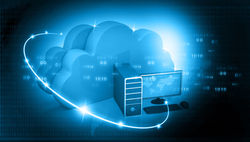

SAAS PLATFORM DEVELOPMENT
Software as a service (SaaS) allows users to connect to and use cloud-based apps over the Internet.
SAAS PLATFORM DEVELOPMENT
Have you ever come across a term Saas. Probably not! But you have definitely used a software on internet without installing it. This is what its all about. By running operations like Office 365, Salesforce, Google apps,businesses are trending towards software as a service. Being a term thrown around a lot lately, SaaS eCommerce is just a small bit and piece of the entire industry.
The digital revolution has changed the work patterns of every business. In the year 2020, the Covid has changed the whole business structure the business who were not so digitally sound have become one. Companies are using Saas for the internal work management as well as so many companies are using Saas as products. Salesforce is one of the leading company in Saas as a product .
 Cloud comput 2 |
|---|
 cloud 2_edited |
 Data Cloud |
 cluod-computing 1 |
 Bar Chart |
 Data on a Touch Pad |
 Analyzing the data |
 Cloud |
 Person Analyzing Data |
 A team discussion at a trading room |
SaaS means Software as a Service. It’s a cloud-based service in which rather than downloading software to a desktop PC or business network, an app is accessed via an internet browser instead. The software app could be anything, ranging from office software to unified communications among an array of other available business applications. In software as a service, a user need not pay for the software itself. It works as a rental, in which users could use it for a specific time and pay for software usage. An offshore outsourcing like Tatvasoft could provide SaaS solutions to organizations.
WHAT IS SOFTWARE-AS-A-SERVICE (SAAS)?

LONG-TERM CLIENT RELATIONSHIPS
At many SaaS vendors, they charge you a yearly fee for their services. However, the actual reality or fact is that by the time they take into account the customer conversion costs and the money they have already invested in the infrastructure, they don’t make big profits in the foremost year of the customer relationship. So it is essential for them that their customers are satisfied with all their services and remain with them for a longer time.
SAFETY AND SECURITY
In many cases, a company’s business information is more safe and secure in a SaaS solution than in customary software. For instance, at many SaaS vendors, two geographically separated data centers connect the infrastructures to provide applications. In the ill-timed event that a failure occurs in one of the centers, the SaaS vendor can enable a second data center, prolonging providing continuous services.
ENABLE BACKUPS AND DATA RECOVERY
If you have worked with conventional software, you will very well know that except a pricey automated solution has been enabled, the procedure of backing up your data on a frequent basis can be a painstaking job at the best of times. However, SaaS solutions do away with this painstaking activity, facilitating automated backups without user intrusion and thus make sure the uprightness of your data.
ASSURED LEVELS OF SERVICE
With most long-established software solutions, you are not given an assurance on how well it will work and perform; however, with SaaS, you are guaranteed on its performance levels. Most of the SaaS service providers guarantee your applications will be accessible 99.5 percent of the time. In the scenario, if the vendor doesn’t deliver the promised performance levels; the vendor has decided penalties to be paid.
FLAWLESS UPDATES AND UPGRADES
SaaS service provider will handle all the software updates and upgrades for you, getting rid of the requirement to install or download different patches. You can also be fully assured that you will always have a higher up-to-date software solution.
NO NEED FOR PHYSICAL INFRASTRUCTURE
When enabling business applications through SaaS, the intricacy of the underlying IT infrastructure is all managed by your SaaS vendor. The end users do not require being concerned about the maintenance of any hardware or which operating system version backs which of the databases. So, the SaaS service provider will take care of all this stuff for your company, so you can directly focus on your business operations.
SWIFT TO IMPLEMENT AND DEPLOY
With SaaS solutions, all you require is a web browser and online access, and you are ready to go. While with conventional software solutions, they can take weeks or months to implement and deploy. Also, SaaS solutions don’t need any of the software tools to be enabled, and so you can access your fresh software right away.
HIGHLY AFFORDABLE
Unlike long-established software, SaaS (like CRM software) is by and large sold mainly on a subscription basis that comprises upgrades, maintenance, and a degree of client support. SaaS subscription models generally operate on a monthly subscription basis, and thus there are no high up-front service costs applicable in this specific model.
SAAS VS OPEN SOURCE
SAAS
Your store is hosted on another company’s servers, and they manage the technical side of keeping your store up and running. Examples include: Zoey, Shopify and BigCommerce
OPEN SOURCE
You’re responsible for installing the platform on a server and managing the technical details around hosting, securing and running your store. Examples include: Magento, WooCommerce and OpenCart. Now that we’re on the same page, let’s dig into the pros and cons of each platform type.
PROS
Less Technical Work
This is the biggest benefit of working with a SaaS platform, all of the technical details are handled for you. You don’t need to manage your hosting, maintain store security or install complex software updates.
Faster Set Up
There’s nothing to download or install, you just create an account and build your online store through a web interface. In most cases, you can go live with your new store in just a few weeks.
Easier to Use Overall
In general, SaaS platforms are built to take as much of the complexity out of ecommerce as possible. This makes them much easier to use for new or non-technical merchants.
PROS
Complete Control
The biggest reason to use open source is because you need to create a custom shopping experience. Since you’ll have full access to the underlying code, you can control almost every aspect of the store to do things that aren’t possible on a SaaS platform.
CONS
Less Control
With SaaS, you don’t have full access to the underlying code, so you don’t have a blank canvas to create anything you want. You need to work within the confines of the tools that the platform gives you.
Hidden Costs
Many times a platform will appear inexpensive, but really offer only basic functionality. To get the features needed to run a real business, you need to install 10 or 15 apps that all come with a small monthly fee. This inflates the price to the point where the platform becomes unaffordable for the merchant.
CONS
Hard to Use
In general, open source platforms are made for developers. The interfaces tend to be unintuitive and filled with overly technical jargon. This makes them too difficult to use for the typical merchant. They really require having a developer on staff or a development agency on retainer.
Lots of Maintenance
Depending on the complexity of your store, staying on top of everything that needs to be maintained, including hosting, security and software updates, can easily be a full-time job. This is why many merchants keep an agency on retainer to take care of this on their behalf.
SAAS VS PAAS VS IAAS



SAAS
Software as a Service, also known as cloud application services, represents the most commonly utilized option for businesses in the cloud market. SaaS utilizes the internet to deliver applications, which are managed by a third-party vendor, to its users. A majority of SaaS applications run directly through your web browser, which means they do not require any downloads or installations on the client side.
PAAS
Cloud platform services, also known as Platform as a Service (PaaS), provide cloud components to certain software while being used mainly for applications. PaaS delivers a framework for developers that they can build upon and use to create customized applications. All servers, storage, and networking can be managed by the enterprise or a third-party provider while the developers can maintain management of the applications.
IAAS
Cloud infrastructure services, known as Infrastructure as a Service (IaaS), are made of highly scalable and automated compute resources. IaaS is fully self-service for accessing and monitoring computers, networking, storage, and other services. IaaS allows businesses to purchase resources on-demand and as-needed instead of having to buy hardware outright.

SAAS ARCHITECTURE
SaaS applications are the new normal nowadays, and software providers are looking to transform their web applications into a Software As a Service application. For this, the only solution is to build a Multi tenant architecture SaaS application.
First of all, you need to understand what a single tenant architecture and a Multi tenant architecture is. Single Tenant vs Multi Tenant: SaaS Architecture.
SINGLE-TENANT ARCHITECTURE
A single-tenant architecture (siloed model) is a single architecture per organization where the application has its own infrastructure, hardware, and software ecosystem. Let’s say you have ten organizations; in this case, you would need to create ten standalone environments, and your SaaS application or company will function as a single tenant architecture. Additionally, it implies more costs, more maintenance, and a level of difficulty to update across the environments.

MULTI TENANT ARCHITECTURE
Multi tenant architecture is an ecosystem or model, in which a single environment can serve multiple tenants utilizing a scalable, available, and resilient architecture. The underlying infrastructure is completely shared, logically isolated, and with fully centralized services. The multi tenant architecture evolves according to the organization or subdomain that is logged into the SaaS application; and is totally transparent to the end-user.

OUR TECHNOLOGY PARTNER
AWS Advanced Consulting Partner certification is a highly-valued status awarded after meeting rigorous requirements, including extensive experience in deploying customer solutions on AWS.
Our AWS-certified experts are equipped to support you through every step of the cloud-computing lifecycle, from initial roadmap to implementation and support. More importantly, we have the experience and knowledge to assess and determine whether AWS or another technology is the right fit for your business goals, performance needs, and budget.

SAAS GROWTH TRENDS IN 2022
We empower technology revolution.
The SaaS market is currently growing by 18% each year
By the end of 2021, 99% of organizations will be using one or more SaaS solutions
Nearly 78% of small businesses have already invested in SaaS options
SaaS adoption in the healthcare industry grows at a rate of 20% per year
70% of CIOs claim that agility and scalability are two of the top motivators for using SaaS applications
Salesforce alone grew from $161 billion in January 2020 to $251 billion in September 2021.
Similarly, Shopify evaluation in early 2020 was $52.1 billion compared to more than $185 billion today—that’s 225% growth in 20 months!
Docsend, which allows customers to share and track documents using a secure link, was acquired by Dropbox for $165 million.
Networking hardware titan Cisco bought up Kenna Security, a market leader in risk-based vulnerability management.
Chorus.ai, aconversionleader, was acquired by ZoomInfo in July for $575 million.
Panasonic Corporation completed the acquisition of the leading end-to-end, digital fulfillment platform provider Blue Yonder.
